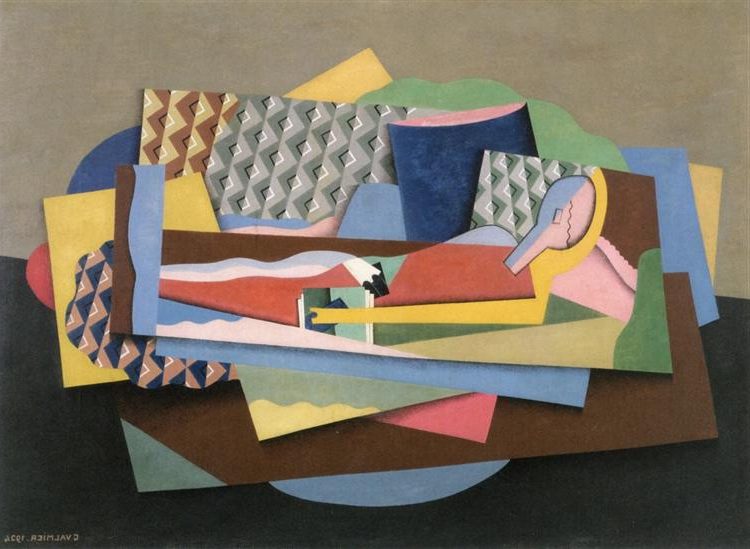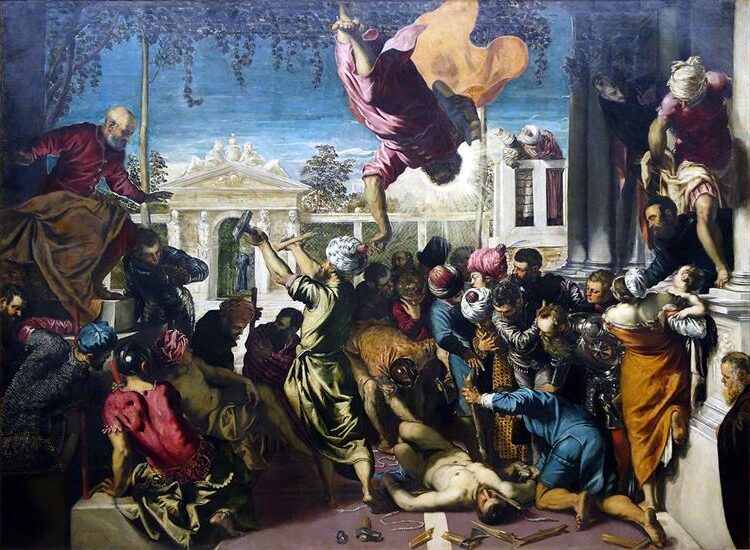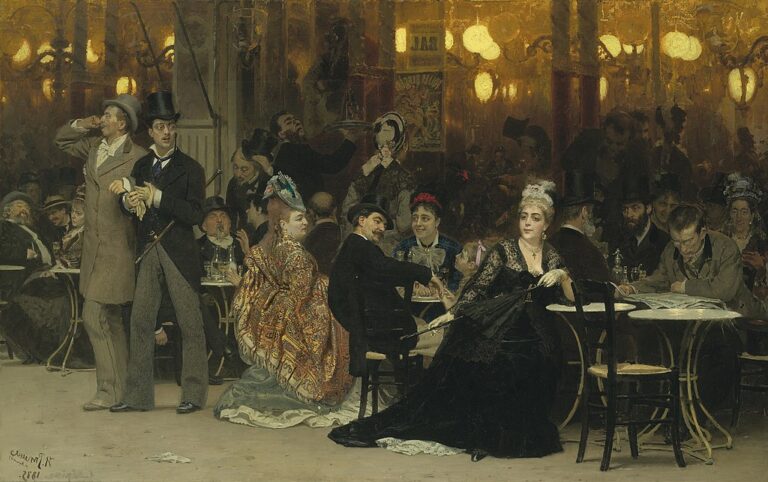Diego Velázquez: Painter of Spanish Golden Age Masterpieces
Born: June 6, 1599, Seville, Spain
Death: 6 August 1660, Madrid, Spain
Art Movement: Baroque
Nationality: Spanish
Teacher: Francisco de Herrera and Francisco Pacheco
Diego Velázquez: Painter of Spanish Golden Age Masterpieces
Life and Education
Diego Velázquez rose from humble beginnings in Seville to become one of Spain’s most celebrated painters. His education and life experiences shaped his unique artistic style that impressed the royal court and established him as a master of Spanish Baroque art.
Early Years in Seville
Diego Rodríguez de Silva y Velázquez was born in Seville, Spain in June 1599 to a family of minor nobility. His parents recognized his artistic talent early and encouraged his creative development.

Christ in the House of Mary and Martha (c. 1620) by Diego Velázquez
Seville during this period was a wealthy trading center and Spain’s gateway to the New World. The city’s vibrant atmosphere exposed young Velázquez to diverse cultural influences.
At age 11, Velázquez began formal artistic training. Seville’s rich artistic tradition provided an ideal environment for a budding painter.
The city’s churches, monasteries, and wealthy merchants offered numerous opportunities to view impressive artworks that would influence his developing style.
Influential Mentors and Apprenticeship
Velázquez first apprenticed with Francisco de Herrera, a harsh but technically skilled painter known for his bold brushwork. This brief apprenticeship lasted only one year before Velázquez sought a more agreeable teacher.
In 1611, he joined the workshop of Francisco Pacheco, a respected artist and theorist in Seville. Pacheco’s studio became Velázquez’s true artistic home for the next five years.
Under Pacheco’s guidance, Velázquez mastered traditional painting techniques and studied art theory. Pacheco recognized his student’s exceptional talent and eventually welcomed him into his family by allowing Velázquez to marry his daughter, Juana, in 1618.
This connection to Pacheco provided Velázquez with valuable social connections and intellectual stimulation that proved crucial to his career advancement.
Move to Madrid and Court Appointment
In 1622, Velázquez made his first journey to Madrid, Spain’s capital, seeking greater opportunities. Though initially unsuccessful in securing royal patronage, he returned in 1623 with stronger recommendations.
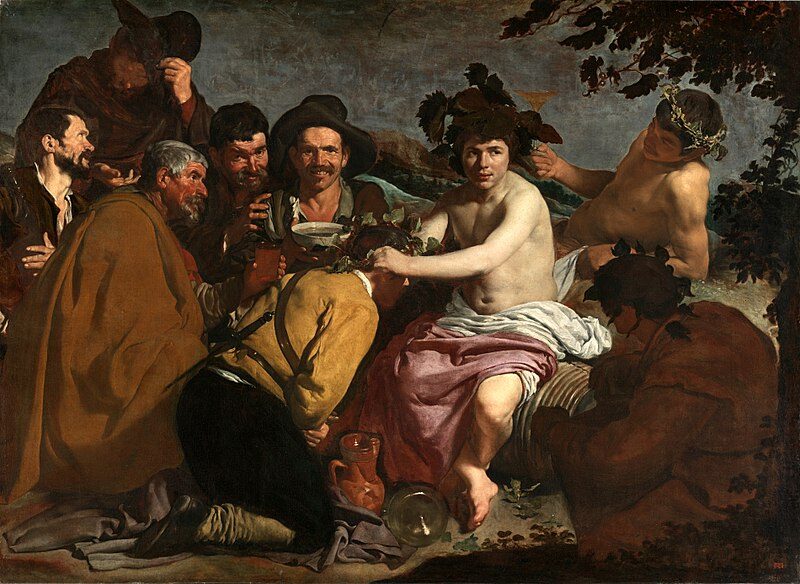
The Triumph of Bacchus/The Drunks (1629)
His breakthrough came when he painted a portrait of King Philip IV that impressed the young monarch. The king was so pleased that he declared no one else would paint him henceforth.
Velázquez was officially appointed court painter in 1623, a prestigious position that provided financial security and access to the royal art collections. This appointment marked the beginning of a lifelong relationship with Philip IV.
At court, Velázquez enjoyed special privileges and a monthly salary. His new position allowed him to develop his distinctive style while studying the royal collections containing works by Titian and Rubens.
Master Works and Artistic Style
Diego Velázquez created revolutionary paintings that changed the course of Western art through his realistic style, masterful technique, and innovative compositions. His work demonstrates extraordinary skill in portraying human figures and capturing light.
Defining Traits of Velázquez’s Style
Velázquez developed a distinctive Baroque style characterized by naturalistic realism and exceptional use of light.
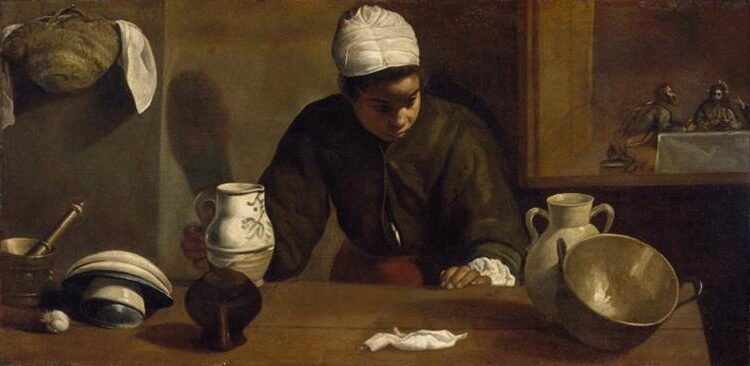
Kitchen Scene with the Supper in Emmaus (1618) by Diego Velázquez
He painted with loose, confident brushstrokes that gave his subjects a lifelike presence. Unlike many contemporaries, Velázquez focused on honest portrayals rather than idealized images.
His use of perspective and spatial arrangement was revolutionary. Paintings often feature multiple spatial planes, creating depth and dimension.
The artist’s color palette was typically restrained, using muted tones punctuated by occasional bright accents.
Velázquez incorporated elements from Italian art while maintaining his Spanish identity. His mature works show remarkable psychological insight, capturing the essence of his subjects beyond mere physical appearance.
Notable Paintings
“Las Meninas” (1656) stands as Velázquez’s most celebrated masterpiece. This complex painting, housed in the Museo del Prado, depicts the Spanish royal family with the artist himself at his easel. Its innovative use of mirrors, perspective, and space continues to fascinate art historians.
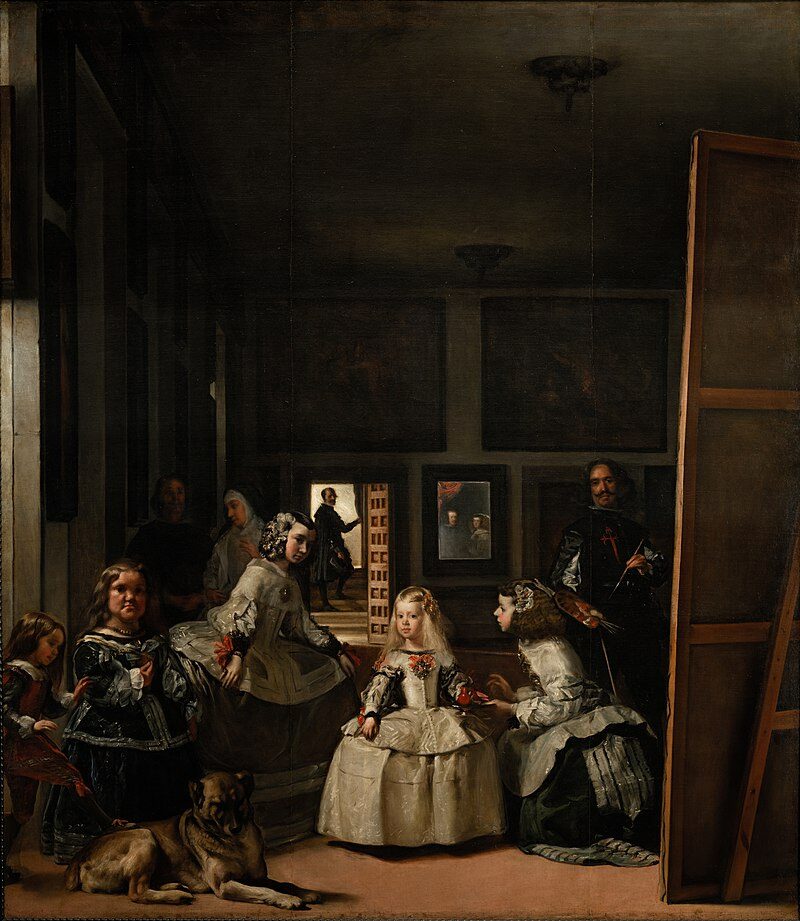
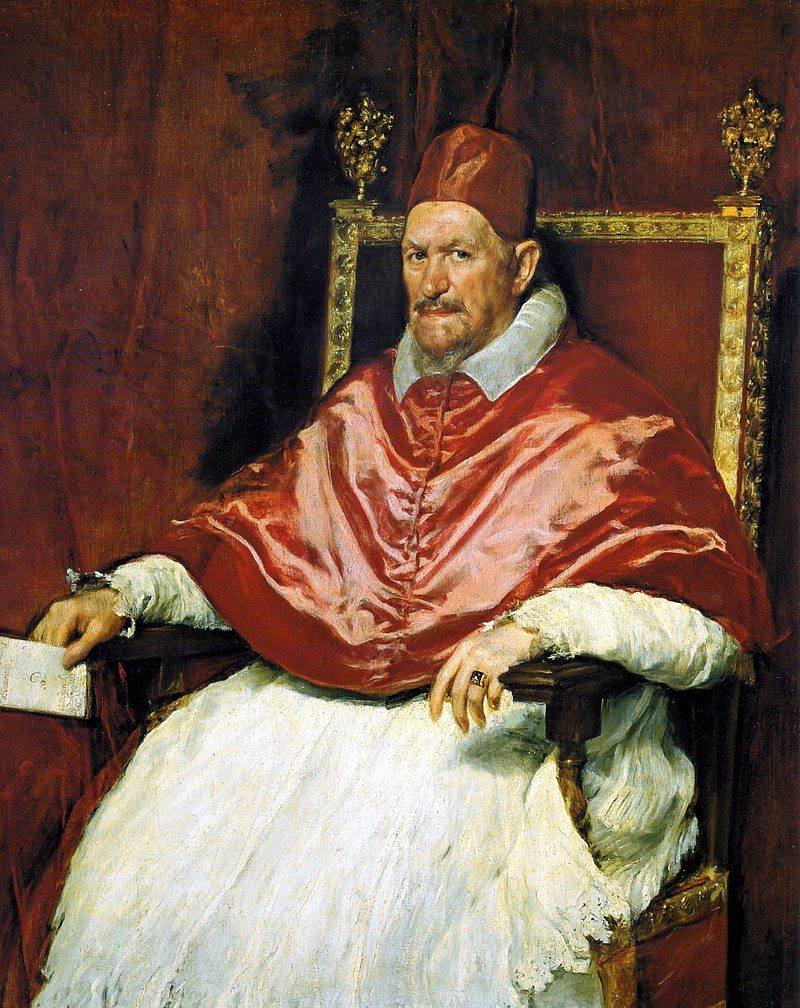
“The Triumph of Bacchus” (1628-1629) showcases his early mastery of group scenes with remarkable attention to human expression. The painting portrays ordinary people celebrating with the god of wine.
His “Portrait of Pope Innocent X” (1650) demonstrates his unmatched skill in capturing human character. The pope reportedly declared it “too truthful” upon seeing it.
“Venus at her Mirror” (1647-1651) breaks tradition as the first Spanish nude, showing Velázquez’s willingness to challenge artistic conventions.
Technique and Influence on Art
Velázquez primarily worked in oil on canvas, developing techniques that would influence generations of artists. He applied paint with varying thickness, creating textural contrasts that enhanced visual impact.
His approach to light was revolutionary. He captured how light affects color and form with unprecedented accuracy.
This mastery of light and shadow created a sense of atmosphere in his paintings that feels remarkably modern.
Impressionist painters of the 19th century drew significant inspiration from Velázquez’s loose brushwork and atmospheric effects. Artists like Édouard Manet studied his techniques extensively.
His exploration of themes related to Spanish court life, mythology, and religious subjects always maintained a distinctive humanity. Even when painting royalty, Velázquez conveyed their essential humanity alongside their status.
Legacy and Impact on Art History
Diego Velázquez’s influence extends far beyond his lifetime, shaping the development of Western art. His technical brilliance and psychological insight created a lasting legacy that continues to inspire artists and captivate audiences worldwide.
Commemoration and Museums
The Museo del Prado in Madrid houses the world’s largest collection of Velázquez paintings. This prestigious institution displays masterpieces like “Las Meninas” and “The Surrender of Breda” in dedicated galleries that attract thousands of visitors annually.
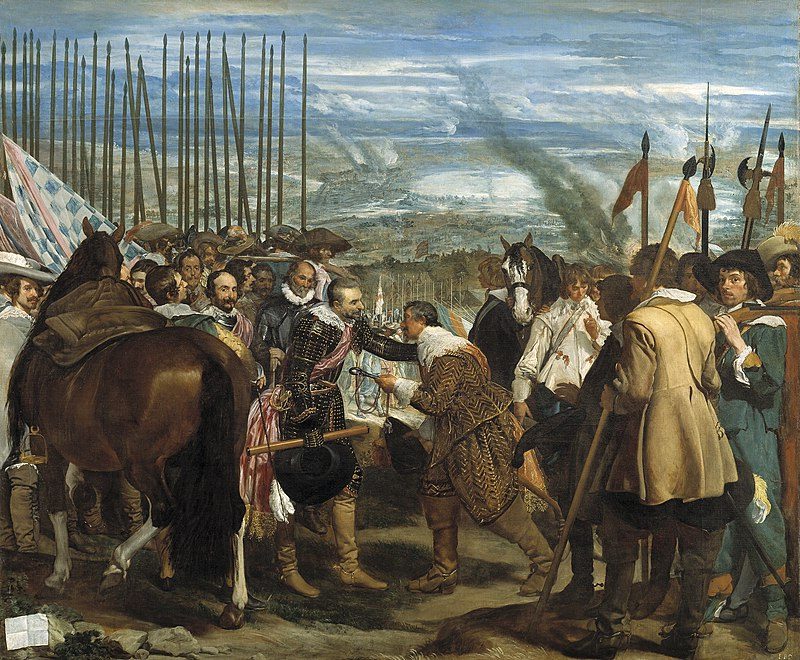
The Surrender of Breda (1634–35) by Diego Velázquez
Spain honors Velázquez through numerous monuments, including a prominent statue outside the Prado. His image has appeared on Spanish currency and stamps, cementing his status as a national icon.
Several of his works, including “The Immaculate Conception” and “The Spinners,” are considered national treasures with strict protections against export or sale. Museums in London, Vienna, and New York also proudly display significant Velázquez works in their permanent collections.
Influence on Later Artists and Movements
Velázquez’s naturalistic style and innovative techniques influenced generations of painters. Édouard Manet called him “the painter of painters” and studied his brushwork extensively.
The Impressionists admired his loose, spontaneous painting style and atmospheric effects. Artists like John Singer Sargent and James McNeill Whistler drew direct inspiration from his portraits.
Pablo Picasso created over 40 variations of Velázquez’s “Las Meninas,” demonstrating the Spanish master’s enduring relevance. Peter Paul Rubens, though a contemporary, recognized Velázquez’s genius during their meeting at the Spanish court.
Francisco Goya, another Spanish master, studied Velázquez’s royal portraits while serving King Charles IV, adopting similar psychological depth in his own work.
Velázquez in Popular Culture
Films and documentaries frequently explore Velázquez’s life and work. “The Vanishing Velázquez” (2016) and “The Art of Spain” (BBC) introduced his genius to mainstream audiences.
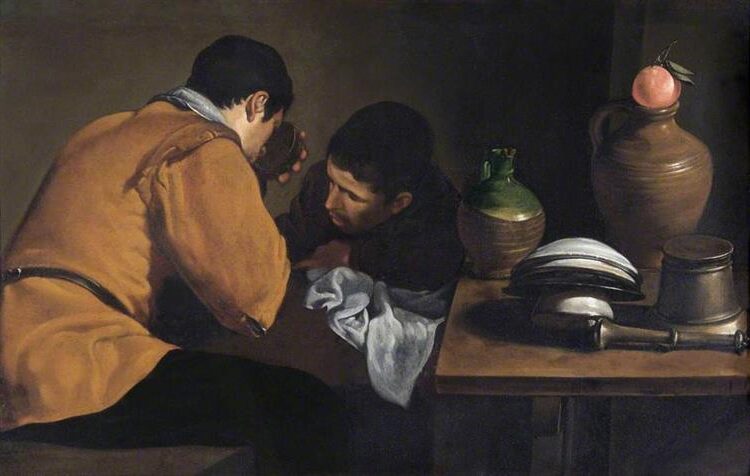
Two Young Men Eating at a Humble Table (c. 1622) by Diego Velázquez
His masterpiece “Las Meninas” appears in literature, including stories by Jorge Luis Borges and Antonio Muñoz Molina. The painting’s complex perspective and philosophical implications continue to inspire writers.
Popular culture references include appearances in video games like “Civilization” and “Assassin’s Creed.” Velázquez’s portraits of King Philip IV of Spain are widely reproduced in history textbooks and academic publications.
Modern artists continue to reference and reinterpret his works through photography, digital art, and installation pieces, demonstrating his ongoing influence across artistic mediums.
Frequently Asked Questions
Diego Velázquez left a remarkable legacy in the art world through his innovative techniques and powerful compositions. His influence spans centuries and touches on many aspects of Western painting traditions.
What are the most celebrated works of Diego Velázquez?
“Las Meninas” (The Ladies-in-Waiting) stands as Velázquez’s most famous masterpiece. This complex composition depicts the Spanish royal family and the artist himself in an innovative arrangement of space and perspective.
“The Surrender of Breda” captures a historical moment with remarkable humanity, showing respect between victor and vanquished rather than glorifying war.
His portrait “Pope Innocent X” was so striking that the pontiff reportedly exclaimed it was “too truthful.” The bold red tones and penetrating psychological insight made it influential for centuries.
“The Rokeby Venus” remains his most famous nude painting, notable for its subtle handling of form and unusual mirror composition.
How did Diego Velázquez influence the development of Western art?
Velázquez pioneered a loose, expressive brushwork technique that influenced later movements like Impressionism. His approach privileged the optical effect over minute detail.
His psychological depth in portraiture set new standards for capturing human character. Artists from Goya to Francis Bacon cited his penetrating vision as transformative.
Velázquez’s experimental compositions challenged traditional spatial arrangements. His complex use of mirrors, multiple viewpoints, and paintings-within-paintings anticipated postmodern concepts centuries before their time.
What techniques did Velázquez employ in his portraiture?
Velázquez mastered what scholars call “the vanishing brushstroke” – paint applied so skillfully that individual marks disappear when viewed at normal distance.
He used selective focus, rendering some areas with precise detail while leaving others deliberately looser. This created a sense of atmospheric depth that made his subjects appear truly three-dimensional.
His color palette was relatively restrained compared to contemporaries, favoring subtle earth tones and grays that created a sense of natural light and atmosphere.
How did Velázquez’s early life and training shape his artistic style?
Velázquez apprenticed under Francisco Pacheco in Seville, learning traditional techniques and rigorous drawing practices. This formal training provided the foundation for his later innovations.
His early exposure to naturalistic Sevillian painting influenced his lifelong commitment to observation rather than idealization.
His study of Italian and Flemish masters during royal-sponsored trips abroad expanded his stylistic range. These journeys introduced him to works by Titian, Rubens, and other influential painters.
In what ways did Velázquez contribute to the Spanish Golden Age of painting?
Velázquez elevated Spanish court portraiture to unprecedented artistic heights. His royal portraits balanced formal dignity with psychological insight in ways that transformed the genre.
He depicted common people and marginalized groups with the same dignity as royalty. Works like “The Water Seller of Seville” brought nobility to everyday subjects.
His technical innovations in brushwork and composition created a distinctly Spanish approach to painting that influenced generations of artists in his homeland.
What role did Diego Velázquez play at the court of King Philip IV of Spain?
Velázquez served as the principal court painter to Philip IV for nearly four decades. This allowed him artistic freedom rare for his time.
Beyond his artistic duties, Velázquez held important administrative positions. He eventually became Palace Chamberlain, a prestigious role that reflected his close relationship with the king.
He was responsible for acquiring Italian masterpieces for the royal collection. His artistic knowledge helped build one of Europe’s most impressive art collections.




